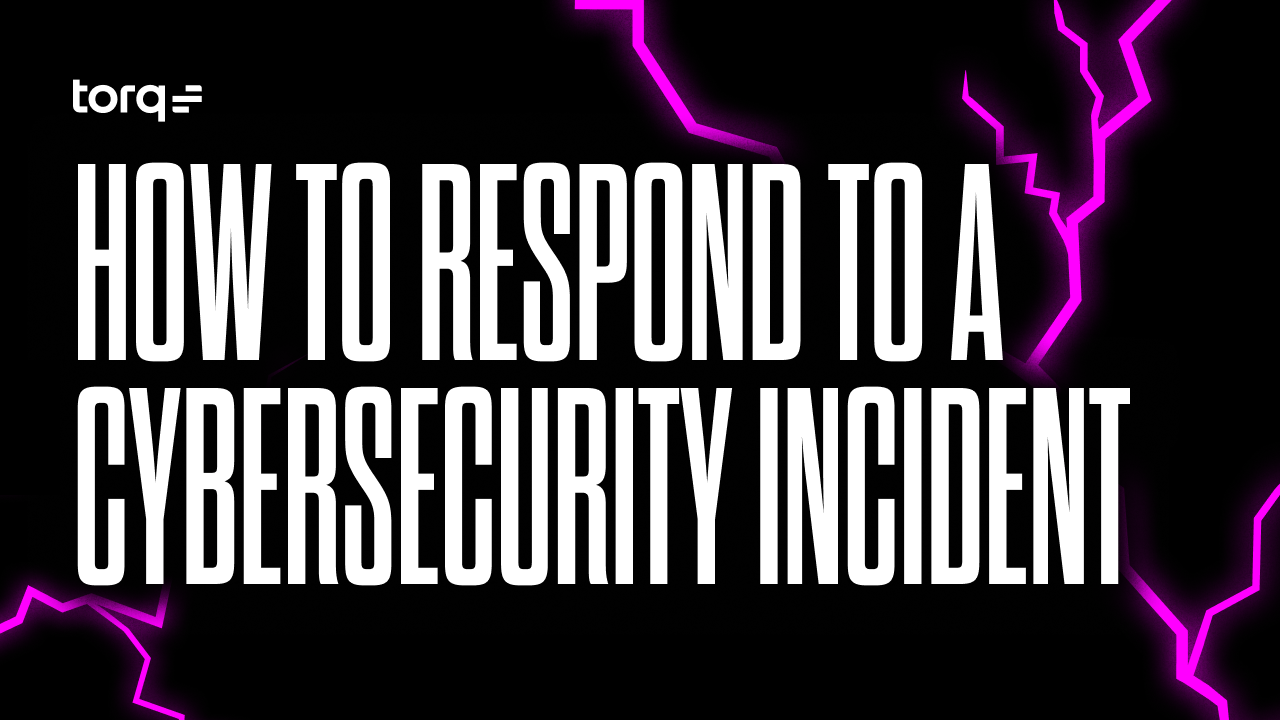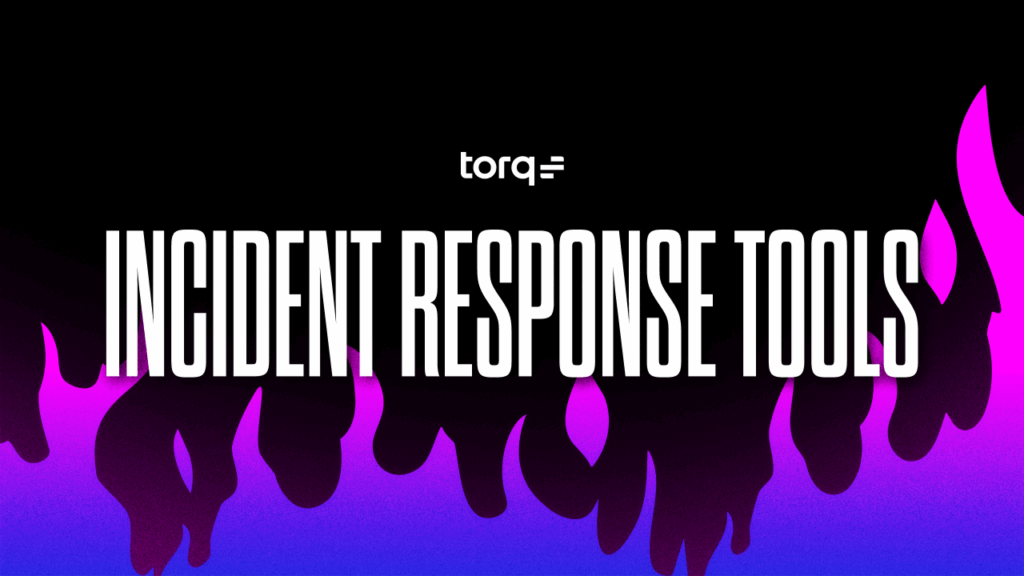Contents
Get a Personalized Demo
See how Torq harnesses AI in your SOC to detect, prioritize, and respond to threats faster.
The question isn’t whether your organization will face a cybersecurity incident — it’s how soon, how often, and how prepared your team is when it happens. From ransomware campaigns to zero-day exploits buried deep in supply chains, today’s most damaging breaches don’t happen in isolation; they build on years of patterns, mistakes, and missed signals.
This blog unpacks the most common cybersecurity incidents, examines real-world attacks that redefined the last decade, and shows how forward-thinking security teams are adapting their response strategies.
Understanding Cybersecurity Incidents
Cybersecurity incidents, as defined by NIST, involve violations of explicit or implied security policies. These events can range from unauthorized system access to the disruption of critical infrastructure.
The terms cyber incident and cyberattack are often used interchangeably, but they have distinct meanings, especially in the context of incident response and security operations.
Cyber Incidents
A cyber incident refers to any event that jeopardizes the confidentiality, integrity, or availability of information or systems, whether malicious or accidental. It includes both confirmed attacks and suspicious activity that could indicate a breach.
Examples of cyber incidents include:
- Unauthorized login attempts
- Malware detections that were blocked before causing harm
- A misconfigured firewall exposing internal systems
- Lost or stolen devices containing sensitive data
Not all cyber incidents are attacks. Some may be policy violations, human error, or internal system failures.
Cyber Attacks
A cyberattack is a deliberate, malicious action carried out by cybercriminals to compromise or disrupt digital systems, steal data, or cause damage.
Examples of cyberattacks include:
- Ransomware encrypting critical business data
- Phishing emails designed to steal credentials
- Denial-of-Service (DoS) attacks crashing a public website
- Nation-state actors breaching a government network
Every cyberattack is a cyber incident, but not every incident is an attack.
Best Practices for Cybersecurity Incident Readiness
To enhance resilience against cyber threats, organizations in any sector can adopt the following measures.
Threat Prevention
- Enforce the principle of least privilege to ensure users have only the access they need.
- Implement intelligent multi-factor authentication (MFA) across all critical systems.
- Regularly update and patch operating systems, applications, and firmware.
- Conduct routine risk assessments to identify and address vulnerabilities proactively.
- Perform regular penetration testing to evaluate defenses against real-world attack scenarios.
- Apply a Zero Trust architecture for network access, validating users and devices continuously.
- Deliver ongoing security awareness training, emphasizing phishing, social engineering, and how to report suspicious behavior.
Threat Detection and Response
- Deploy advanced threat detection tools such as endpoint detection and response (EDR) and intrusion detection systems (IDS).
- Monitor system and network activity, using analytics and behavioral baselines to spot anomalies.
- Use real-time threat intelligence feeds to stay ahead of new attack tactics and tools.
- Collaborate with cybersecurity firms, law enforcement, and government entities to exchange intelligence and response strategies.
Incident Recovery
- Establish and routinely test a comprehensive incident response plan that defines roles, processes, and escalation paths.
- Regularly back up critical data and systems.
- Store backups in secure, off-site, and immutable storage locations, and validate recovery processes through routine testing.
By following these cybersecurity best practices, organizations can reduce their exposure to cybersecurity incidents and respond when incidents occur. When paired with security Hyperautomation, these efforts become exponentially more effective.
Torq Hyperautomation™ enables teams to operationalize these best practices at scale — automating access control enforcement, triggering dynamic responses based on threat signals, and ensuring every stage of prevention, detection, and recovery is seamlessly orchestrated. As threats grow more sophisticated, Hyperautomation ensures your defenses evolve just as quickly, turning manual playbooks into intelligent workflows that keep your organization ahead of cyber risk.
How Hyperautomation Prevents Cybersecurity Incidents
Hyperautomation is a critical strategy in preventing cybersecurity incidents before they escalate. By orchestrating and automating security processes end-to-end, Torq Hyperautomation enables security teams to detect, assess, and act on threats at unprecedented speed and scale.
Integrate your stack: Torq Hyperautomation connects disparate tools and data sources to deliver unified, context-rich insights. For example, identity and access management (IAM) alerts can automatically correlate with endpoint and network telemetry to identify anomalous behavior that may signal credential misuse or lateral movement. This level of cross-platform analysis helps detect threats earlier in the kill chain, allowing preventive action before damage occurs.
Enforce policies consistently: Hyperautomation also excels at enforcing consistent security hygiene. It can automatically revoke stale user access, quarantine suspicious endpoints, and enforce policy-based remediation based on dynamic risk scoring. These proactive workflows close common security gaps — such as misconfigured permissions or unpatched vulnerabilities — that often lead to major cyberattacks.
Boost efficiency and scalability: Because Hyperautomation can scale across every phase of the incident lifecycle, from detection to response and resolution, it also reduces alert fatigue and ensures that no critical signals are missed. Routine tasks like enrichment, user verification, or SIEM query execution are handled in real time, allowing analysts to focus on more strategic decision-making.
Improve defenses over time: Additionally, by embedding intelligence into every step, Hyperautomation allows security teams to continuously learn from past incidents. Insights from previous breaches can be operationalized instantly, whether it’s to update playbooks, block known IOCs, or adapt response logic dynamically based on threat actor behavior.
In today’s threat environment, Hyperautomation enables SOCs to stay ahead of adversaries, minimize dwell time, and prevent cybersecurity incidents before they disrupt the business.
How Hyperautomation Helps Respond to Cybersecurity Incidents
Should a cyber incident occur, every second counts. Torq enables security teams to move at machine speed by automatically ingesting alerts from any source — SIEMs, EDRs, CSPM tools, identity platforms, and more — and instantly launching enriched, prioritized investigations. These cases are automatically populated with relevant context: log data, user metadata, threat intelligence, and past activity history. This removes the need for analysts to pivot between platforms or perform repetitive lookups manually.
Streamline case management: AI-driven case management is at the heart of Torq’s incident response capabilities. As soon as a case is created, it’s enriched with dynamic summaries, root cause analysis, and recommended next steps, making it easier for SOC teams to determine what’s happening and how to respond. This reduces dwell time, accelerates triage, and ensures consistency across cases, even when dealing with the most complex attacks.
Automate incident response: Torq’s no-code/low-code interface allows SecOps teams to rapidly design incident response workflows. Whether it’s automatically isolating endpoints, rotating credentials, disabling compromised accounts, or notifying incident response teams via Slack or ServiceNow, Torq makes these responses seamless and repeatable. Organizations can integrate any tool into the workflow and create logic that adapts based on threat severity, incident type, or asset sensitivity.
Move from reactive to proactive defense: Additionally, Torq helps identify patterns across recurring incidents. By aggregating telemetry across tools and standardizing responses through automation, teams can quickly recognize if a new event is part of a broader campaign or an emerging threat vector. This enables proactive defense, rather than reactive firefighting.
Measure and improve security performance: Security leaders also benefit from full auditability and metrics tracking, making demonstrate performance improvements, compliance, and ROI easier. Torq’s dashboards provide visibility into case closure time, response time, alert volume, and automation coverage, empowering CISOs and SOC directors to continuously refine their strategy.
With Torq, teams respond intelligently and at scale, making it a critical partner in any modern SOC’s incident response strategy.
Recent Cybersecurity Incidents & Their Impact
MOVEit Attack (2023)
The MOVEit attack exploited vulnerabilities in the MOVEit Transfer software, compromising sensitive data from hundreds of global organizations, including government and private entities. This incident highlights the risks of third-party software vulnerabilities, prompting increased scrutiny in software supply chains.
Colonial Pipeline Ransomware Attack (2021)
One of the most famous ransomware attacks in recent history, the Colonial Pipeline incident disrupted fuel supplies across the U.S. East Coast. Attackers leveraged ransomware to encrypt critical operational data, demanding millions in ransom. The incident exposed vulnerabilities in critical infrastructure, highlighting the need for robust cybersecurity and incident response planning.
SolarWinds Supply Chain Attack (2020)
The SolarWinds incident involved malicious actors inserting a backdoor into the software update process, affecting thousands of customers, including U.S. government agencies and Fortune 500 companies. This highlighted supply chain risks, significantly changing how organizations vet and monitor third-party vendors.
Facebook Data Breach (2021)
Personal data from approximately 533 million Facebook users was leaked due to security flaws. This breach highlighted data privacy issues and the challenges even the most technologically advanced companies face in securing user information.
Historical List of Major Cybersecurity Incidents
- Google (2009): Operation Aurora targeted intellectual property and raised awareness about state-sponsored cyber espionage. The attackers exploited Internet Explorer vulnerabilities and successfully breached multiple U.S. tech and defense companies, prompting a major shift in enterprise threat modeling.
- Stuxnet (2010): A highly sophisticated malware attack believed to target Iranian nuclear facilities, demonstrating cyber capabilities in physical damage. It was the first known cyber weapon to cause real-world infrastructure destruction, redefining cyber warfare’s role in international conflict.
- Yahoo Breach (2013–2014): Affected approximately 3 billion user accounts, highlighting massive data management vulnerabilities. The breach went undetected for years, raising global scrutiny around breach disclosure practices and user data security.
- Sony Pictures (2014): Hackers leaked sensitive internal data, causing operational disruption and highlighting geopolitical cyber threats. The attack was attributed to North Korea and is considered a pivotal moment in the rise of politically motivated cyber aggression.
- OPM Breach (2015): Affected 21.5 million individuals, significantly impacting U.S. federal personnel records. Stolen data included detailed background checks, making it one of the most damaging breaches for national security and espionage risk.
- Equifax Breach (2017): Compromised sensitive personal data of 147 million consumers, underscoring the importance of patch management. The breach led to congressional hearings, executive resignations, and a $700 million settlement, emphasizing the consequences of poor cyber hygiene.
- Marriott Data Breach (2018): Impacted approximately 500 million customers, exposing weaknesses in data security within hospitality services. The breach persisted for years unnoticed and included passport numbers and travel details, sparking global concerns about long-term surveillance and identity theft.
Revolutionizing Incident Response with Hyperautomation
As the volume, velocity, and complexity of cybersecurity incidents continue to grow, organizations must move beyond traditional detection and manual response. The stakes have never been higher, from phishing emails and ransomware to nation-state-backed supply chain compromises.
Understanding the anatomy of past cyber attacks is essential, but building future-proof defenses requires automation, intelligence, and speed. Torq’s Hyperautomation platform empowers modern SOC teams to stay ahead of threats by preventing incidents before they escalate and responding instantly if they do.
By unifying context, automating response, and eliminating manual bottlenecks, Torq helps organizations transform cybersecurity incidents from existential risks into manageable, repeatable operations. Security resilience starts with action, and Torq makes that action faster, smarter, and more effective than ever.
Explore how Torq can enhance your cyber resilience, ensuring you’re not only aware of cybersecurity incidents but equipped to combat them effectively with speed, efficiency, and control.







